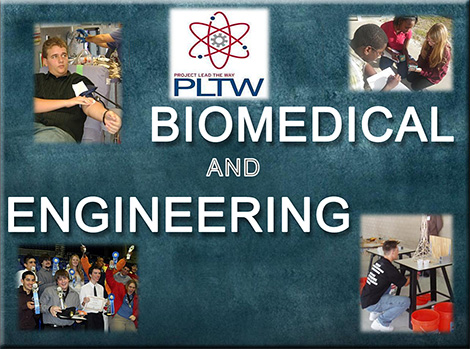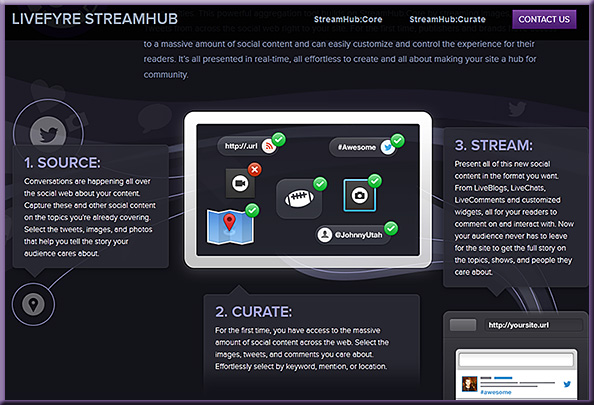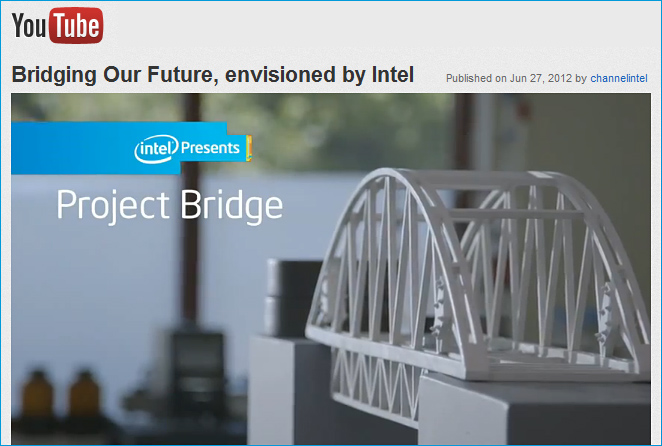VIDEO | The Educational Landscape in 50 Years — from the evoLLLution.com by The Khan Academy
Excerpt:
In this video, Salman Khan, founder of the Khan Academy, a not-for-profit online education provider, shares his thoughts on what the educational landscape will look like in 50 years. By 2060, Khan predicts three major shifts in education: a change to the classroom model, a change to the credential model and a change in the role of the instructor.
.
From DSC:
THIS is what it could look like if students OWNED their own learning and could pursue their own passions! — A powerful piece! Well worth your time if you are involved with — or concerned about — education in any way, shape, or form.
The video starts off with this troubling/deep assertion by a student (which I’m sure varies in actuality across the board):
- “It’s crazy that…in a system that is meant to teach…and to help the youth, there is NO voice from the youth at all.”
From DSC:
A few radical — but powerful ideas — to help students OWN their own learning (something that they will need for the rest of their lives):
- More choice, more control
- Research what you want to research — “The most important thing about your question is that you ACTUALLY WANT to know the answer.”
- Students pursue their own passions — be that an interest in music, art, science, aviation, or in another discipline.
- Student present their findings to each other — which involves more of a team-based approach (i.e. peer pressure in a positive way here, strongly encouraging each other to do their best work so as not to let others down)
- Peer evaluation
- No quizzes
- No grades
- Often no adults in the room; if adults are there, they are acting more as guides and facilitators
- Multiple types of “assignments”/activities — some individualistic, some group work, some long-term
A couple of questions kept running through the back of my mind:
- Did they hand select these particular students for this program?
- If so, what were the predominant characteristics of those students?
With that said, this is a very powerful piece — well worth your time to check out.
From DSC:
The worlds of K-12, higher education, and corporate training/development are all seeking solid solutions to the Bring Your Own Device (BYOD) or the Bring Your Own Technology (BYOT) solution. (The way I see it, it would sure be helpful it Apple worked with the other relevant vendors to establish better wireless networking protocols.) Anyway, below are some items on this topic:
How to BYOT for Learning? –– from shift2future.com by Brian Kuhn
Responding to the “Shift to the Future” — from seanrtech.blogspot.com by Sean Robinson
BYOD: 7 reasons to leave them to their own devices — from Donald Clark Plan B
Ten reasons the iPad is an awesome tool for classrooms and education — from isource.com with thanks to Krista Spahr, Senior Instructional Designer at Calvin College, for this resource
The 4 easiest ways to mirror the iPad (comparison chart) — from edudemic.com by Seth Hansen; working off of a similar posting from Tony Vincent
Strategies for taking flight with BYOT — from byotnetwork.com
Excerpt (emphasis DSC):
The Partnership for 21st Century Skills identified 4 critical areas of learning for students that include creativity, critical thinking, communication and collaboration. In Forsyth County Schools, we’ve been working hard with parents, teachers and students to embrace learning with student-owned technologies; something we call Bring Your Own Technology (BYOT). What we know for sure is that BYOT is really more like Bring Your Own Learning because we’ve discovered that it is NOT about the technology – it IS about the learning.
From DSC:
This aligns well with Alan November’s replacing “one-to-one” with “one-to-world.”
But whether we use the acronomyns BYOD, BYOT or BYOL (or whatever), it’s all about students being able to contribute content (hopefully that they created) and participate in the discussions.
From June 2012

From October 2009:
Building off of Steelcase’s media:scape product line
From DSC:
Some very frustrated reflections after reading:
- It’s time to worry: Boys are rapidly falling behind girls in school — from takepart.com by Peg Tyre
Reporter Peg Tyre explains why the challenges boys face in school need to be taken much more seriously.
Excerpt:
Right now, boys are falling out of the kindergarten through 12th grade educational pipeline in ways that we can hardly imagine.
This situation continues to remind me of the oil spill in the Gulf (2010), where valuable resources spilled into the water untapped — later causing some serious issues:
.
From DSC:
What are we doing?!!! We’ve watched the dropout rates grow — it doesn’t seem we’ve changed our strategies nearly enough! But the point that gets lost in this is that we will all pay for these broken strategies — and for generations to come! It’s time to seriously move towards identifying and implementing some new goals.
What should the new goals look like? Here’s my take on at least a portion of a new vision for K-12 — and collegiate — education:
- Help students identify their God-given gifts and then help them build up their own learning ecosystems to support the development of those gifts. Hook them up with resources that will develop students’ abilities and passions.
. - Part of their learning ecosystems could be to help them enter into — and build up — communities of practice around subjects that they enjoy learning about. Those communities could be local, national, or international. (Also consider the creation of personalized learning agents, as these become more prevalent/powerful.)
. - Do everything we can to make learning enjoyable and foster a love of learning — as we need lifelong learners these days.
(It doesn’t help society much if students are dropping out of K-12 or if people struggle to make it through graduation — only to then harbor ill feelings towards learning/education in general for years to come. Let’s greatly reduce the presence/usage of standardized tests — they’re killing us! They don’t seem to be producing long-term positive results. I congratulate the recent group of teachers who refused to give their students such tests; and I greatly admire them for getting rid of a losing strategy.)
. - Give students more choice, more control over what their learning looks like; let them take their own paths as much as possible (provide different ways to meet the same learning objective is one approach…but perhaps we need to think beyond/bigger than that. The concern/fear arises…but how will we manage this? That’s where a good share of our thinking should be focused; generating creative answers to that question.)
. - Foster curiosity and wonder
. - Provide cross-disciplinary assignments/opportunities
. - Let students work on/try to resolve real issues in their communities
. - Build up students’ appreciation of faith, hope, love, empathy, and a desire to make the world a better place. Provide ways that they can contribute.
.
- Let students experiment more — encourage failure.
.
Excerpt:
It’s not unusual for a science fiction television show to spin off a video game. What is unusual is linking the show and the game together on an ongoing basis, with plot elements and characters from each crossing over to the other. In April, gaming company Trion Worlds and the Syfy cable television channel will unveil Defiance, the first such crossover massively multiplayer online game (MMO) and TV show.
From DSC:
Transmedia.
Multimedia.
Interactivity.
Participation.
Gamification.
Sounds like there must be something here for the next gen of learners — and learning from the living room.
Also see:
- Six fascinating, informative, and just plain good lectures on videogames in iTunes U — from forbes.com by Carol Pinchefsky
The object formerly known as the textbook –– from The Chronicle by Jeff Young
.
Excerpt:
Textbook publishers argue that their newest digital products shouldn’t even be called “textbooks.” They’re really software programs built to deliver a mix of text, videos, and homework assignments. But delivering them is just the beginning. No old-school textbook was able to be customized for each student in the classroom. The books never graded the homework. And while they contain sample exam questions, they couldn’t administer the test themselves.
One publisher calls its products “personalized learning experiences,” another “courseware,” and one insists on using its own brand name, “MindTap.” For now, this new product could be called “the object formerly known as the textbook.”
From DSC:
Imagine how this sort of thing might fit into the “chalkboard of the future” — as applications and content flow onto the “board” from open source repositories and/or from the publishers’ cloud-based repositories of content…
.

.
or in learning from the living room…
.
![The Living [Class] Room -- by Daniel Christian -- July 2012 -- a second device used in conjunction with a Smart/Connected TV](http://danielschristian.com/learning-ecosystems/wp-content/uploads/2012/07/The-Living-Class-Room-Daniel-S-Christian-July-2012.jpg)
Also see:
Can you apply Google’s 20% time in the classroom? — from guardian.co.uk/teacher-network by Stuart Spendlow
Google offers its engineers 20% of their timetable to work on their own projects. Keen to see if it could work for education, Stuart Spendlow introduced the idea to his own classroom
.
Specialty classroom technologies — from centerdigitaled.com
- Kristy Chapman | Special Education Director | Union County | Board of Education, GA
- Kyle Li | Full-time Game & Learning Instructor | School of Art, Media, and Technology | Parsons, The Newschool for Design, NY
- Moses A. Ojeda | Principal (I.A.) | Thomas A. Edison Career & Technical Education High School, NY
- Denise Spence | Magnet Lead Technology Teacher | Academy for Technology Excellence | Academy for Digital Excellence | Academy for Game Design and Programming Excellence | Dunbar High School, FL
Session was moderated by Tom Ryan, Ph.D. | Sr. Fellow, Center for Digital Education | Former CIO, Albuquerque Public Schools
Resources
- View the recorded session
- View the final presentation (no audio)
- Visit www.centerdigitaled.com/events for more event information.
Example slides:











8 things to look for in today’s classroom — by George Couros
Excerpt:
As I think that leaders should be able to describe what they are looking for in schools I have thought of eight things that I really want to see in today’s classroom. I really believe that classrooms need to be learner focused. This is not simply that students are creating but that they are also having opportunities to follow their interests and explore passions. The teacher should embody learning as well.
From DSC:
If we can tap into students’ passions/hearts, I believe we’ll find enormous amounts of creative energy pour forth! I’m again struck with adding the tags/keywords to this posting — More choice, more control.
Looks like a very interesting set of tools/technologies out at livefyre.com — a piece of which is subtitled, the “Web’s first Engagement Management System.”
.
- How might this set of technologies/functionalities affect what’s possible with MOOCs?
.
- Could universities and colleges use something like this to talk to their constituencies?
.
- As the computer, the telephone, and the television continue to converge, what educationally-related opportunities might be possible here?
.
15 audience, student, classroom response systems — from etale.org by Bernard Bull
Also see the following items from Genius:
- The New Consumer Agenda:
From authentic collaboration to small indulgences … what consumers want in 2013 and beyond, and how brands are responding.
- Marketing Trends 2013+:
From black marketing to crowd creatives, brand gaming to urban formats, solomo and diffusion … what will be big in marketing in 2013
Additional notes from DSC:
- With thanks going out to Mr. Jim Woods (@hyperinnovation) on twitter for this resource
- The wave-related graphics above are very appropriate for our times — and I’d rather be surfing the waves then being crushed by them!
From DSC:
I’ve been trying to figure out the best ways to incorporate a BYOD/BYOT into the Smart Classroom. That is, how can students’ devices seamlessly communicate with the main displays around the classroom? How can they quickly display a blog posting or a Google doc for example…or play a song they wrote, etc. So I was excited to wake up this morning with the following concept/idea:

.

.
.
Other features/thoughts:
- Line of sight communications — students must be in the room to display something up on the main displays
- Information travels many ways: From large multitouch displays/walls to students’ devices and vice versa; so a professor could hit “Save” in order to send his/her annotations to all of the students’ devices (allowing them to be more cognitively present — vs madly writing down what the professor is writing)
- The Smart Classroom’s infrastructure becomes like a multi-thredded processor — instantaneously and simultaneously handling a far greater amount of data — going in multiple directions
- What’s an interesting idea here is for discipline-specific, cloud-based storage mechanisms for students who want to contribute their pieces of content to their schools repositories of content
- This topic reminds me of a graphic I created a while back, re: The “Chalkboard” of the Future:
So…what if the 4 screen’s on Julong’s Ultra-IPBOARD were coming from 4 different sources? Perhaps:
- One from a publisher’s cloud-based content repository
- Another from a stream of content originating from a student’s iPad
- Another from a stream of content originating from the Smart Classroom’s PC or Mac
- …and the last source originating from a student’s smartphone?
Also see:
.






















